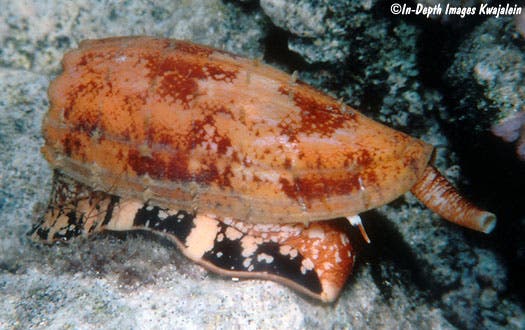What do you do if you need to catch your own food… but you’re just not fast enough? That’s the problem cone snails had to face, and the solution they came up with is pretty amazing: they kill fish by lowering their sugar levels with a unique type of insulin, researchers found
Cone snails are found in marine environments. They are part of a large genus, and all the species from that genus are venomous capable of inflicting serious damage to humans; there have been many cases of divers being stung by cone snails, and even some lived were claims by the very powerful venom. Cone snails use a hypodermic-like modified radula tooth and a venom gland to attack and paralyze their prey before engulfing it. Their tooth is used like a dart or a harpoon, injecting the venom. But a group of researchers now believes we can actually use this venom for medical purposes.
The venom of cone snails contains hundreds of different compounds, and its exact composition varies widely from one species of cone snail to another. But they all have one thing in common – they kill fish by overdosing them with toxins.
“It looks like the fish is completely narced,” says Christopher Meyer, a cone snail specialist at the Smithsonian’s National Museum of Natural History, who wasn’t involved in the study.
When the insulin is injected into the prey, it causes the sugar levels to plummet, making the fish sluggish; once it gets slow enough, the snail closes in and injects another toxin which completely paralyzes them. The type of insulin they use for this is what scientists believe can be used.
“This is a unique type of insulin. It is shorter than any insulin that has been described in any animal,” Baldomero M. Olivera, a professor of biology at the University of Utah and a senior author of the study, said in a statement. “We found it in the venom in large amounts.”
In order to study this substance, researchers examined the gene sequences of all the proteins in the venom gland of Conus geographus, a cone snail with a very powerful venom. They detected two sequences which are similar to the insulin we humans use, but also spotted some differences. Studying it could provide new insight into how human metabolism works, and even help in concrete medical situations.
“The snail insulin consists of 43 amino acid building blocks, fewer than any known insulin. Its stripped down size and odd chemical modifications may have evolved as a way to make it better at causing hypoglycemia in prey,” the scientists said in the statement.
This is yet another proof that there are many secrets in the biological world still waiting to be discovered. The fact that this slow sea snail is able to develop such a complex chemical mechanism is truly spectacular.
“How brilliant is this,” says Meyer, who has observed a close cousin of the geographic cone snail—named Conus tulipa—hunting and killing fish in the same way in Guam. The fish almost look like they’re passed out drunk, he says, and now we know why.
Cone snail venom has also been proposed as a pain reliever and an antibiotic.
Journal Reference: Proceedings of the National Academy of Sciences.










